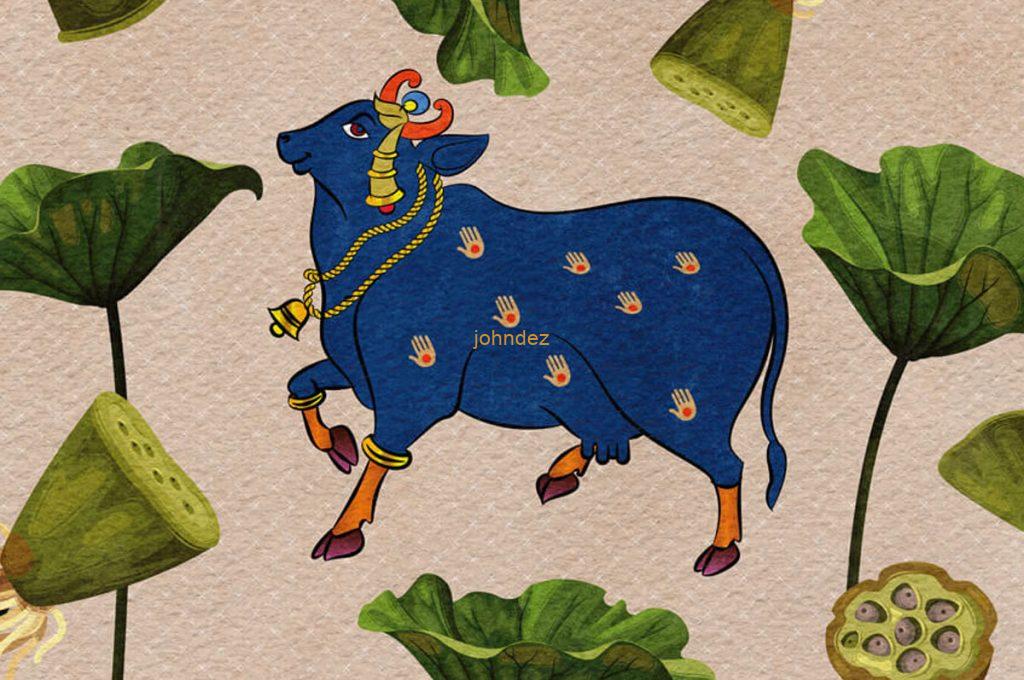Indian folk arts are an integral component of the country’s culture and identity, as they are intricately linked to the spiritual essence of people’s lives. This article aims to raise awareness of the remarkable array of Indian folk arts and to contribute to their revival and preservation for future generations. The report delves into some of the prominent Indian folk art forms that have endured and evolved for millennia to attain their current form.
India’s diverse and distinctive culture has given rise to a plethora of art forms, some of which remain unaltered by modernization, while others have adapted to new techniques and materials. Most of these art forms depict religious epics or deities, each with its own unique style and charm. In ancient
times, natural dyes and colors made from soil, mud, leaves, and charcoal were used to create these art pieces on canvas or cloth, imbuing them with a sense of age-old history and vintage nostalgia.
Aipan Art
Aipan art, an ancient style of painting mainly depicting Jain, Hindu, and Buddhist themes, has its origins in Almora, a town in Uttarakhand, North India. It flourished during the reign of the Hindu Rajput dynasty, the Chands, who ruled the Kumaon region in the 10th century. There are many regional variations of this art form, with designs and motifs inspired by community beliefs and aspects of nature.
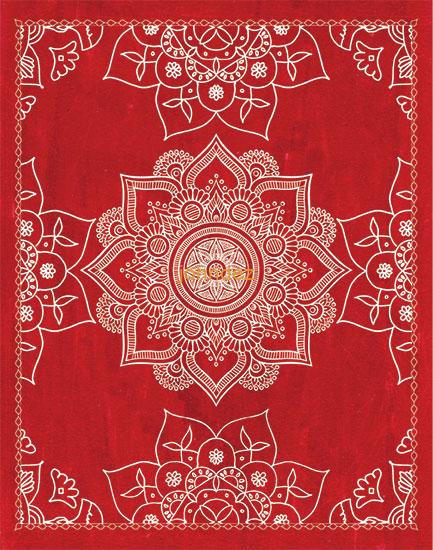
In Kumaon, the creation of rice flour art is deeply rooted in culture and religion. Women from the region are mostly involved in this form of artisanry, often found on the floors and walls of Puja rooms and home entrances. The art form is believed to bring good fortune to some, while others view it as an aesthetic tradition without any specific meaning. Regardless, it remains a fascinating art form with a rich cultural history.
Bhil Painting
The Bhil tribe is a native community of western and central India and currently, it is the third largest community in India with a population of fifty million. Historically, the Bhil tribe used to be skilled hunters and archers but later turned to agriculture. Some members have also migrated to larger cities, taking up manual labor like masonry and road-making.
Art is an integral part of the Bhil community, and they use song, dance, and painting as a means of commemorating events, recording memories, and fighting despair and disease. Bhil paintings are an example of folk art, created by folk artists from the Bhil community, believed to be the oldest surviving form of Indian painting, having been practiced for over two millennia.
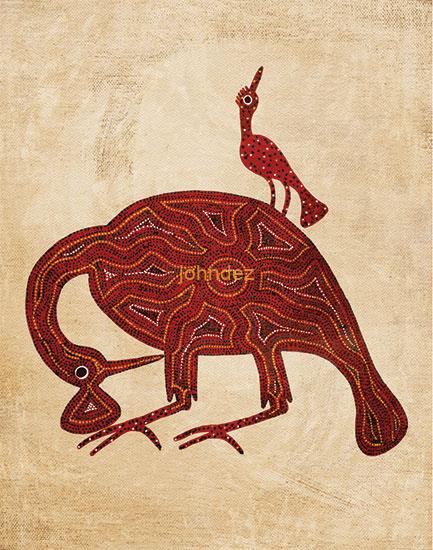
The Bhil tribe is a large tribal community residing in central India, specifically in Madhya Pradesh. They trace their ancestry to Eklavya and Valmiki, whom they claim are actually from their community. Bhil art involves painting stories, prayers, memories, and traditions onto plain backgrounds using a symphony of multi-hued dots. The dots are the distinct identity of Bhil art, and they hold multiple layers of symbolism, inspired by the kernels of maize, which is their staple food and crop. For many Bhil artists, mastering the dots is the first step towards learning the art.
Cheriyal
The Cheriyal Scrolls paintings are a traditional art form originating from Hyderabad. The scrolls are made from ragi dough that is shaped into scrolls and then hand-painted with vegetable colors. The scrolls depict scenes from the Ramayana, Mahabharata, or other epic folk stories. This art form was historically closely associated with the story-telling balladeer community known as Kaki Padagollu.
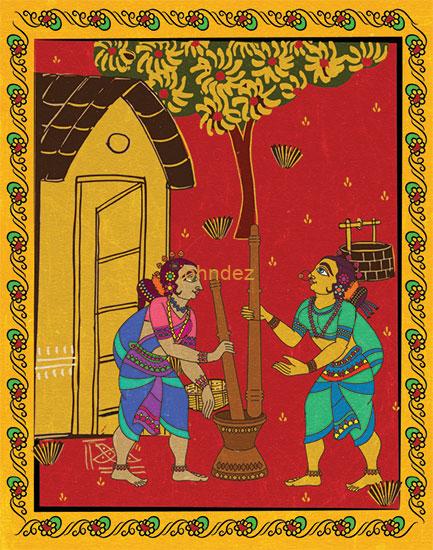
The scrolls can be up to 40-45 feet long and typically 3 feet wide, written in a vertical format. These canvas scrolls are hand-painted in a unique style that incorporates local motifs and iconography. Characterized by a dominant red background, these paintings are brilliantly hued and received Geographical Indication Status in 2007. Painted in narrative panels, they are similar to comic strips, depicting scenes and stories from Indian mythology and epics. Their style is distinct and immediately conveys age-old Indian traditions and customs in a beautiful and engaging manner.
Chitrakathi
The term “Chitrakathi” originates from two words: “Chitra” meaning picture and “Katha” meaning story. A Chitrakathi is a person who tells stories, with the aid of visual images. Tribal life has a long-standing tradition of such storytellers. Chitrakathi is an occupational caste whose traditional livelihood was to narrate stories with pictures while journeying to various places.
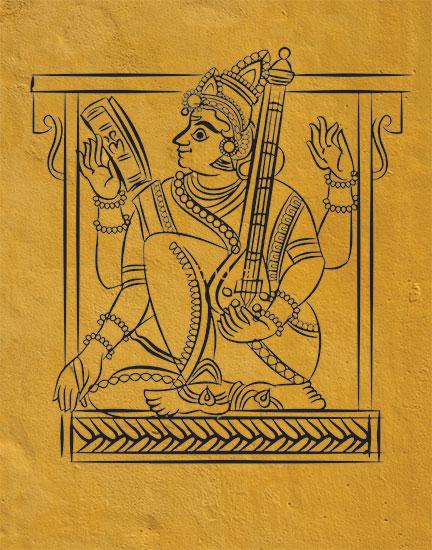
The Chitrakathi art form is practiced within the Thakar tribe in Maharashtra. They are wandering musicians who perform traditional stories in different villages. They create a series of single-sheet paintings, and all paintings belonging to one story are kept in a bundle called a ‘pothi’. Painting themes include local versions of Ramayana and Mahabharata, as well as mythological stories.
Chittara
Chittara Art is a unique folk art practice that is indigenous to the Deevaru community, a matriarchal and agrarian community of nature worshipers residing in and around Sagar. The practice is primarily engaged in by women of the community as a socio-cultural practice that embodies a microcosm of socio-cultural dynamics. The Chittara drawings are intricate patterns that represent the auspicious ceremonies and rituals of life, symbolized in geometric patterns.
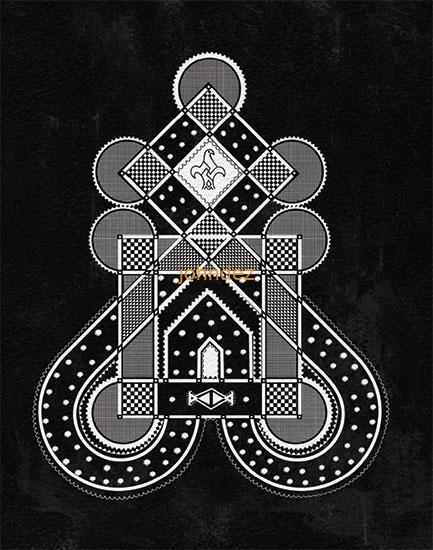
The art form requires a certain understanding of ratios and proportions, which the women of the community have been using with great dexterity. The paintings are usually 2-3 feet in size, aesthetically refined, and made of symbols representing their physical environment. The community uses eco-friendly natural resources like ground rice paste for white color, roasted rice for black, yellow seeds (Gurige), red earth, and brushes made up of Pundi Naaru.
For women of the Deevaru community, Chittara paintings are a source of great joy, beauty, and creativity. They take pride in their tradition and are socially bonded and culturally integrated by unique customs and ritualistic practices. The wealth of artistic workmanship holds eternal value, and amidst the urban landscape, the treasures of handicrafts like Chittara provide enriching relief in daily life.
Godna Art
Godna Art or Tattooing has been a part of Indian culture for a very long time. It is popular in tribal societies as well as those in the North & Central regions. In Northern and Central India it is called “Godna” tattooing which was observed as being typical of primitive tribes groups.
Godna art is the term used to describe permanent ornamentation of the body with tattoos. It is mostly practiced in the Chattisgarh state of India. Godna art is regarded as a type of postmodern body decoration where one’s creativity can be expressed & displayed on their skin. Gonda, like other forms of tattooing, needs artistic dexterity and precision.
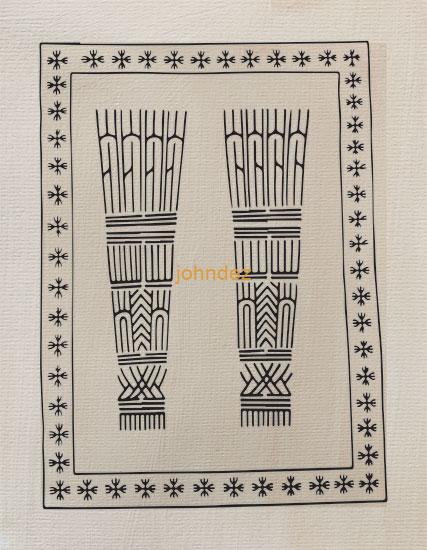
The main purpose of tattooing one’s body is to obtain acceptance from society. Sometimes tattoos are also done on areas of the body that are not readily visible. The art itself provides an ideal canvas for originality and self-expression, which is what everyone wants.
Tribal folks in the state also wear ornamentation which differs from their process and meaning. It is deeply rooted in their spirituality and belief. They believe ornaments are mortal and human-made like humans themselves.
Tattoos are commonly used as permanent body decorations and are often emblematic of a certain group or identification. The tribal women of Chhattisgarh, India decorate their bodies with tattoos called “Godna.”
Gond
Gond painting is a form of art practiced by the Gond tribe of Madhya Pradesh, India. It is characterized by the use of dots, dashes, and short lines to create complex patterns, and is often used as a type of mural painting to decorate walls and floors during festival celebrations. The pigments used in Gond painting are primarily derived from natural sources such as vegetables, flowers, cow dung, and mud. The designs and patterns used in Gond painting are inspired by the culture and traditions of the Gondi tribe, which inhabits regions of Madhya Pradesh, Assam, and Andhra Pradesh.
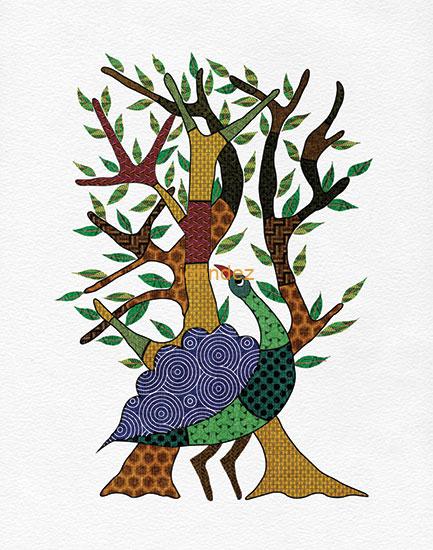
A unique feature of Gond painting is the fusion of living creatures with nature, creating a sense of interconnectedness. Jangrah Singh Shyam, a young Gond tribal artist, played an important role in popularizing Gond paintings by transforming these mural paintings into canvas and paper. His style of Gond painting on paper and canvas is known as Jangarh Kalam. Jangrah Singh Shyam’s contemporary Gond art, created using natural materials such as bamboo and leaves, is exhibited in galleries and museums worldwide, including the Smithsonian Museum of Natural History in Washington D.C. and London’s Victoria and Albert Museum.
It is fascinating to see how the Gond tribe’s culture and connection to nature are reflected in their art. It is also inspiring to see how Gond painting has evolved and gained recognition beyond its traditional mural form and is now appreciated on paper and canvas in galleries and museums around the world.
Kalamkari
Kalamkari paintings often depict mythological stories and epics, such as the Ramayana and Mahabharata, as well as scenes from nature and everyday life. The intricate designs and vibrant colors of Kalamkari make it a popular choice for clothing, home decor, and accessories.
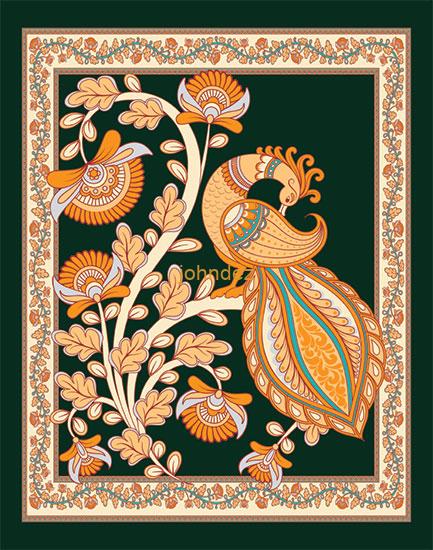
The Srikalahasti style of Kalamkari originated in the town of Srikalahasti in Andhra Pradesh, India. This style is characterized by freehand drawing and the use of natural dyes such as indigo, madder, and pomegranate. The Machilipatnam style, on the other hand, originated in the town of Machilipatnam in Andhra Pradesh, India. This style is characterized by block printing and the use of bright colors such as red, yellow, and green.
Kalamkari has a rich history and has been practiced in India for centuries. Today, it is still a popular art form and is often used in contemporary fashion and design. The intricate designs and natural dyes used in Kalamkari make it a unique and beautiful art form that continues to captivate people around the world.
Kalighat
The Kalighat paintings originated in the 19th century in the Kalighat area of Kolkata, West Bengal, India. The paintings were initially sold as souvenirs to pilgrims visiting the Kalighat Kali Temple, which is one of the most important Hindu pilgrimage sites in India. The paintings were made on the cloth and depicted the Hindu goddess Kali and other deities, as well as scenes from Hindu mythology.
Over time, the Kalighat paintings evolved to include depictions of everyday life and contemporary social issues. The artists used simple brushstrokes and vibrant colors to create the paintings, which were easily reproducible through lithography.
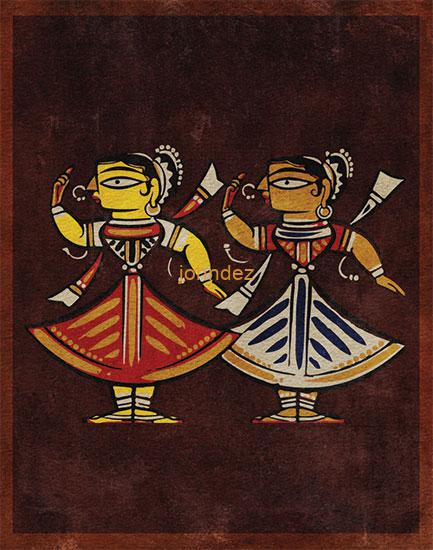
The artists who created Kalighat paintings were called “patuas,” and they would travel from village to village to sell their paintings and sing the stories depicted in them. The patuas were traditionally from a lower caste and were considered to be outside of the traditional caste system.
The Kalighat paintings played an important role in the development of modern Indian art. The paintings influenced the Bengal School of Art, which sought to revive traditional Indian art forms and incorporate them into modern art. The Kalighat paintings also inspired artists like Jamini Roy, who incorporated the style and techniques of the paintings into their own work.
Today, Kalighat paintings are still popular, and artists continue to create new works using traditional styles and techniques. The paintings are now sold in markets and art galleries across India and around the world, and they remain an important part of India’s cultural heritage.
Kangra
Kangra paintings are a style of Indian miniature paintings that originated in the Kangra district of Himachal Pradesh in northern India. The art form is said to have originated in the 17th century and has been passed down through generations of artists in the Kangra Valley. Kangra paintings are known for their intricate detailing, vibrant colors, and graceful lines.
One of the most popular styles of Kangra painting is the Basohli style, which originated in the Basohli district of Jammu and Kashmir. Although this style died out in the 18th century, it was revived by Kangra artists who were influenced by its unique style and bold use of colors.
During the reign of Maharaja Sansar Chand Katoch (r.1776–1824), Kangra painting reached its peak. The Maharaja was a patron of the arts and a great supporter of Kangra artists. He commissioned large paintings that often depicted scenes from the life of Lord Krishna, whom he was a devoted follower of. The romantic sentiment of Shringar was a popular theme in Kangra paintings during this time.
Kangra paintings are known for their use of bright colors, intricate detailing, and fine lines. The artists used a special type of brush made from squirrel hair to achieve fine lines and intricate detailing. The colors used in Kangra paintings are made from natural pigments, which have helped to retain their vibrancy over time.

Today, Kangra paintings are still practiced by artists in and around the Kangra Valley. The art form continues to evolve, with artists incorporating new techniques and styles into their work while still staying true to the traditional Kangra style. Kangra paintings are highly prized by collectors and art enthusiasts, and they remain an important part of India’s cultural heritage and continue to be appreciated for their beauty and intricate details.
Kerala Mural Art
Kerala Mural Paintings, originating from Kerala, India, is a form of temple art that has been practiced for over 2000 years by local artists. These paintings have retained their Indian roots despite the influence of western techniques. They depict scenes from the traditional Puranas as well as daily life in Kerala, showcasing an individual’s inner convictions, beliefs, traditions, and customs.
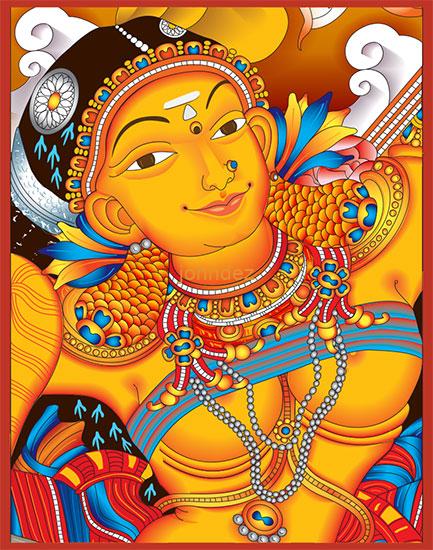
Kerala’s own style of murals can be seen in the Thirunadhikkara Cave Temple and Tiruvanchikulam, with these murals dating back to around 400 A.D. The art form has a close connection to the daily life of the people and expresses the religious and cultural traditions of Kerala.
Traditional murals are painted with five colors – red, yellow, green, black, and white – all of which are derived from natural substances. Red, yellow, and white paints are made from red laterite and white lime, while black paints are the result of oil-lamp soot deposits.
Three of the most popular mural pieces in Kerala are the Shiva Temple of Ettumanoor, Ramayana murals from Mattancherry Palace, and Vadakkumnatha Khatam.
Kurumba
The Kurumba tribe is actually one of the indigenous communities in the Nilgiri Hills, in the southern Indian states of Tamil Nadu and Kerala. They are known for their knowledge of medicinal plants, hunting skills, and rich cultural traditions.
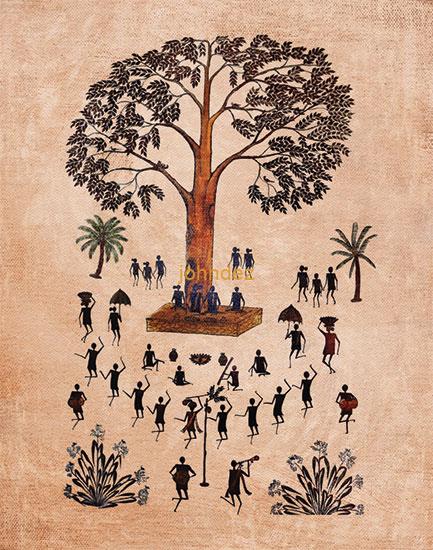
Kurumba art is characterized by its clean geometric style, which distinguishes it from other folk painting styles like Warli and Saura. The figures in Kurumba paintings are arranged concentrically and are often depicted as if they are dancing. The paintings feature more than three colors, and natural colors obtained from leaves and tree resins are traditionally used for illustrations. The Kurumba paintings are recognized by the figures with bunned hair, which are depicted as almost rectangular-shaped bodies.
Unlike Warli and Saura folk art, Kurumba paintings do not often feature animals. The artwork usually depicts people performing various tasks, such as hunting, harvesting, and celebrating festivals. The level of detail in the paintings is remarkable, especially given the use of clean lines and geometric shapes.
Leather Puppet – Tollu Bommalu
The state of Andhra Pradesh is renowned for its traditional leather puppet art and craft, which has its roots in the region’s folk and cultural expression, known as Leather puppetry or tollubommalatta in Telugu. Leather puppets are crafted using hide or stiff parchment and are then colored to make them more vibrant and durable. Compared to similar crafts from other regions in India, leather puppets from Andhra Pradesh are known to be more colorful and visually appealing.
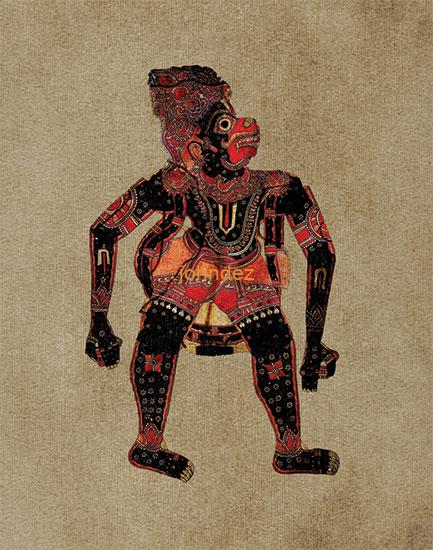
The main centers of the leather puppet industry in Andhra Pradesh are Nimmalakunta in the Ananthapur district, Narsaraopet in the Guntur district, and D.C. Palle in the Nellore district. Artisans in these areas consider their craft to be a hereditary profession, and most of them come from the Marathi-Balija culture.
Madhubani
Madhubani painting, also known as Mithila painting, is a traditional folk art from India that utilizes geometric patterns, line drawings, and contrasting colors. Its origins can be traced back to the time of Raja Janak, a king of Mithila, who asked his subjects to decorate their city in beautiful ways to celebrate his daughter Sita’s wedding to Lord Ram.
In recent years, artists have painted murals with geometric patterns on walls throughout the city, depicting various rituals and celebrations such as weddings and births. Historically, Madhubani painting was passed down from generation to generation within families in the Mithila Region. There are five distinct styles of Madhubani painting: Bharni, Kachni, Tantrik, Godna, and Kohbar.
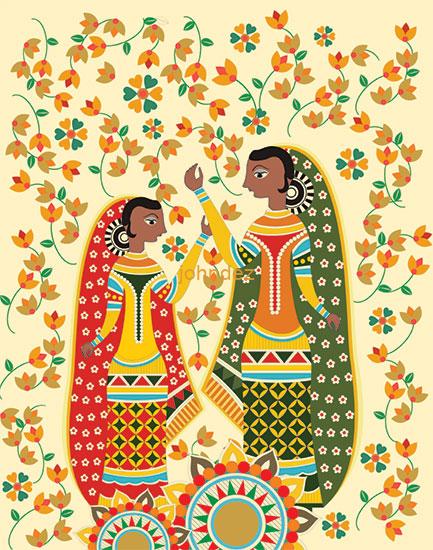
Madhubani paintings are always two-dimensional and do not contain any empty spaces, but instead are filled with drawings of flowers, animals, birds, and other geometric designs. Traditionally, these paintings were created on freshly plastered wall surfaces or floors of huts, but now they are also made on cloth, handmade paper, or canvas. The paste required to create the paintings typically contains powdered rice.
This form of painting is produced using a variety of tools and naturally-made dyes, resulting in colorful geometric patterns that are visually striking. Different cultural occasions and festivals have their own associated rituals, such as Holi or Surya Shasti, which can include Kali Puja, Upanayana, and Durga Puja.
Nirmal Painting
Nirmal Paintings, a form of Indian folk art originating from Nirmal in Nirmal District, Telangana, is known for its use of natural colors and themes such as religious, rural, family, and landscapes. The town of Nirmal in Telangana is renowned for its crafts and art, with local artisans called Naqash producing beautiful handicrafts sought after worldwide. Nirmal paintings capture the rustic and royal environment with beautiful forms and vibrant colors, often featuring flora and fauna.
Legend has it that the artisans of Nirmal once built a grand throne for the Nizam of Hyderabad using an intricately designed banana bud. The Nizam was impressed by their skill and subsequently patronized the artisans, leading to the promotion of the craft by Lady Hyder in 1951 under the Cottage Industries division of Nizam’s government.

Nirmal paintings often feature traditional scenes from Hindu epics such as Ramayana and Mahabharata, influenced by styles such as Kangra, Ajanta, and Mughal miniatures. Natural sources provide the colors for these paintings, with birds depicted in intricate detail, and the art form continues to be popular among customers today. The finished product is of world-class export quality.
Pattachitra
Pattachitra is a traditional Indian folk art from Odisha that involves paintings on cloth, mostly depicting Hindu deities. The name “Pattachitra” comes from the words “patta” meaning cloth and “Chitra” meaning painting. This art form has been around for centuries and was originally used for rituals and as souvenirs for pilgrims.
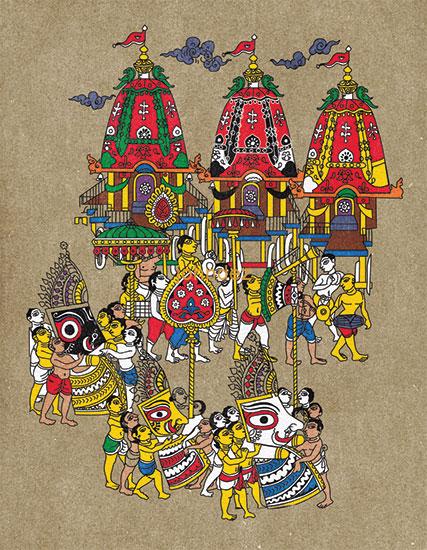
Pattachitra paintings can be found on a variety of surfaces in Odisha, including walls, boxes of sweets, and pillars outside. The paintings can be divided into three categories based on the medium: Patta Chitra (paintings on cloth), Bhitti Chitra (paintings on walls), and Tala Patra Chitra or Pothi Chitra (palm leaf engravings). The style of all three remains more or less the same during a specific time period because artists were commissioned to work in all these media.
The style of Pattachitra paintings resembles the ancient paintings of famous temples and centers of the Puri, Konark, and Bhubaneshwar regions, dating back to the 5th century BC. Some of the best Pattachitra work can be found in the village of Raghurajpur, near Puri. Pattachitra is not just an art form but also serves as a visual tool during the performance of Bengali songs.
Phad
Phad Paintings are a traditional Indian folk art form that has been around for over 700 years. The paintings are created using a scrolling technique on a long piece of cloth or canvas known as a phad, and depict local tales by scrolling up and down, representing both sides of the story. These stories usually involve the gods of Rajasthan, with Pabuji and Devnarayan being the most commonly depicted figures.

The paintings are used by the Rebari community of Rajasthan as mobile temples for worship and are carried around by folk singers known as Bhopas. The Phads of Pabuji and Devnarayan are typically around 15 and 30 feet long respectively and were traditionally painted with vegetable colors. Today, some Phad paintings are also made using synthetic colors to ensure their longevity.
Pichwai
Pichwai paintings, also known as “Pichvai,” is a traditional Indian folk art that originated in Nathdwara, Rajasthan over 400 years ago. These paintings are created on cloth using natural colors and vegetable dyes, with a natural brush made from animal hair or cotton threads.
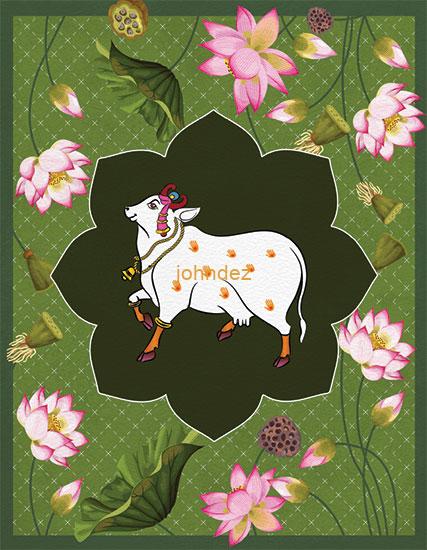
The paintings typically depict tales from Lord Krishna’s life and are visually stunning and intricate. Pichwai paintings are considered as a way to show devotion to Lord Shrinath, a manifestation of Krishna, and are executed with great care and devotion by the artists. The Pichwai paintings can be seen as a map to the universe and often depict scenes from Shrinathji’s life and various celebrations.
The tradition of Pichwai paintings is practiced mainly by Hindu Brahmins in India and is believed to have roots in the Vedic period. Many texts under this style revolve around Shrinathji, and the paintings usually depict Lord Krishna’s various moods or various sevas (offerings) of Shrinathji. These paintings are an ancient religious art form with deep spiritual significance.
Pithora
Pithora painting is a traditional Indian folk art that originated in the state of Gujarat, particularly practiced by the Bhil and Bhilala tribes of the Panchal Plateau region. The paintings are usually done on walls and use only white water-based paints for decoration.
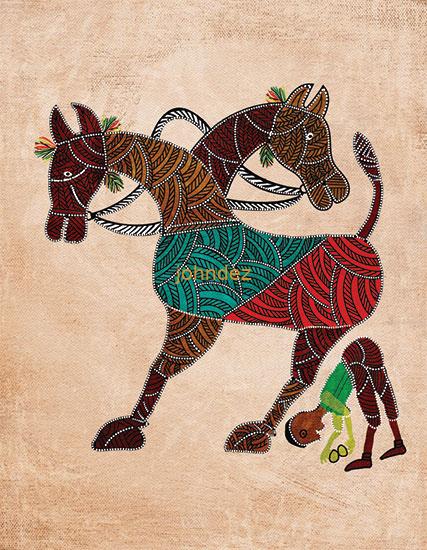
Pithora paintings often depict scenes of agriculture, fertility, festivals, and childbirth, and are considered sacred in the Pithora culture. The god Baba Pithora is often depicted in the paintings and is worshiped to heal illness and ward off bad omens. The process of creating a Pithora painting involves consulting with a tantric and performing worship before beginning to paint. The painting is usually done on the main wall of the house.
Bani Thani
Rajasthani paintings are known for their diverse styles, and the Kishangarh School of Art is one such style. This style originated in Kishangarh, a city in Rajasthan, India.
Kishangarh paintings are unique, with a distinct religious atmosphere. The depictions of buildings are minimalistic and do not detract from the serene nature of the artwork. The female figures portrayed in these paintings have strong facial features, which are drawn in a distinct manner.

Under the patronage of Maharaja Savant Singh, an 18th-century Rajput king who was devoted to Lord Krishna, the artists of Kishangarh created beautiful and intricate miniatures. The romantic stories of Lord Krishna and Radha provided inspiration for most of the paintings.
Interestingly, the Radha Krishna depicted in Kishangarh paintings was used to represent Maharaja Savant Singh and his mistress, and later his wife, Vishnupriya. The paintings are therefore known as “Radha Krishan” and depict the story of their love.
Maharaja Savant Singh’s mother employed Vishnu Priya as a court singer, and he fell in love with her because of her beautiful voice. They got married in 1740, and Vishnupriya became known for her elegant style, which she displayed through her makeup and other accessories. The Kishangarh facial types have been speculated to be influenced by the Mughal miniature painting, Bani Thani.
Rajasthani Miniature
Rajasthan has been a pioneering region for miniature paintings in India, with the art form evolving here in the Marwar-Mewar region in the early 15th century as textual illustrations to Jain text Kalpa-Sutras. This style of painting has strong connections to the great art of Ajanta and Gujarat.
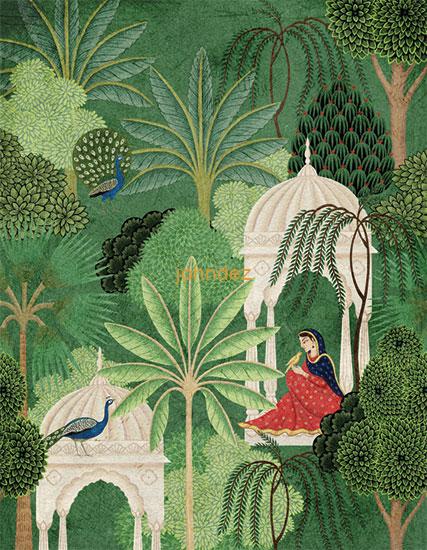
The Bhagava paintings of Palam created around 1555, marked the beginning of this art style, which was subsequently widely adopted in Rajasthan. The Rajasthani school of painting emerged at the end of the 16th century in Mewar, and various painting styles developed over time, with Kota, Bundi, Bikaner, Kishangarh, and Mewar being the most famous.
While Rajasthani miniature art was influenced by the Mughal style, it had its own unique personality and perspective, characterized by a more lyrical approach and a preoccupation with capturing a sense of sacredness. Primary colors such as red, blue, and yellow were mainly used, along with green, brown, and white. Gold and silver were also used in some paintings.
The development of Rajasthani paintings was influenced by two main factors: the patronage of rich Rajputana communities, the revival of Vaishnavism, and the growth of bhakti cults. This art form has since become an integral part of Rajasthan’s cultural heritage and is still practiced in present-day Jaipur.
Santhal
Santhal paintings are a unique form of Indian folk art that feature simple, childlike depictions of animals, birds, and insects set against a backdrop of leafy patterns. These paintings are created using locally-sourced materials like rice paste, tree bark, cow dung, and natural pigments by the Santhal people, an indigenous tribal community living in the states of Jharkhand, Bihar, West Bengal, and Odisha.
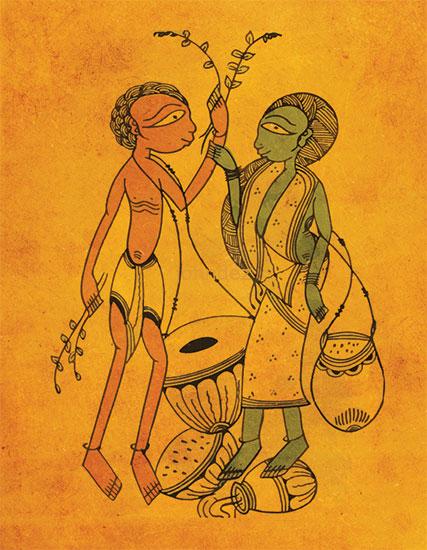
Santhals paint the walls of their huts during village festivals, using these paintings as a way to express themselves and participate in ceremonial performances. They worship a stone as a formless representation of the divine and sing about the hardships of everyday life. The figures in their paintings are often multicolored, and while they are not necessarily realistic, they are artistic projections that show humans, animals, and creatures coming together to form one head. Santhal paintings often feature depictions of mother and child, as well as human and animal couples, symbolizing love and unity.
Sohrai and Khovar
Nestled deep in the wooded hills and valleys of Hazaribagh, a remote region of the Jharkhand state, mothers have been passing down their skills and motifs for countless generations to create murals that depict their animist and spiritual belief systems, as well as their local and personal beliefs.
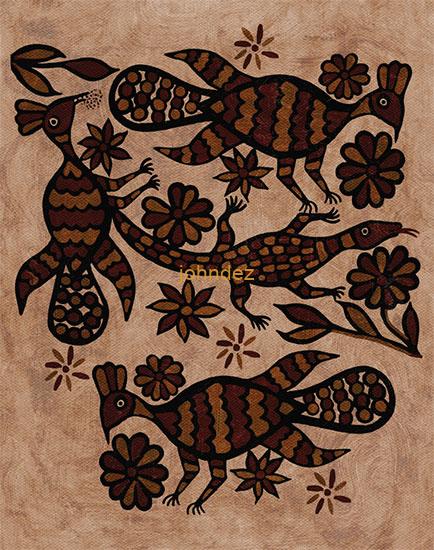
The world of Sohrai and Khovar paintings is inhabited by sparrows, peacocks, squirrels, and cows. This folk art is heavily inspired by forest life, and the term Khovar refers to the decoration of the marriage chambers, while Sohrai paintings are created during the harvest season to decorate mud houses, express gratitude to the forces of nature, and repair the houses after the rains. These painting styles can be traced back to the cave painting tradition during the Mesolithic and chalcolithic ages, and they are traditionally practiced by women in the community. While originally used to decorate the walls of huts, the murals are now also created on paper and cloth for commercial sale.
In 1991, members of the Indian National Trust for Art & Cultural Heritage (INTACH) discovered the painted forest villages. Over the following years, a dozen major Mesolithic rock art sites were also discovered in the area, indicating a long continuity of mural art. Today, the Sohrai and Khovar paintings of Jharkhand are GI-tagged by the Geographical Indications Registry.
Thanjavur Doll
The Thanjavur doll is a traditional handicraft from the Thanjavur region of Chennai, Tamil Nadu, made using traditional methods and minimal mechanical tools. What sets this doll apart from others is its bobblehead and roly-poly structure. The doll’s head is larger than its body, causing it to move like a pendulum and preventing it from falling over sideways.

The doll’s center of gravity and weight is focused at its lowest point, resulting in a dance-like, continuous movement with slow oscillations. These toys are traditionally crafted from terracotta and finished with intricate painted designs. They have been recognized by the Indian government as a Geographical Indication since 2008-09.
Warlis
Warli painting, originating from Maharashtra, is a traditional folk art style that has been in existence for thousands of years. The paintings are created mainly by Tribal people from the North Sahyadri Range of India.
The Warli tribe, one of the largest in India, resides outside Mumbai, and their culture is centered around the concept of Mother Nature, with elements of nature being focal points in Warli paintings. The Tarpa dance, featuring a trumpet-like instrument played by different men, is often depicted in Warli paintings, with dancers pairing up and circling the tarpa player.
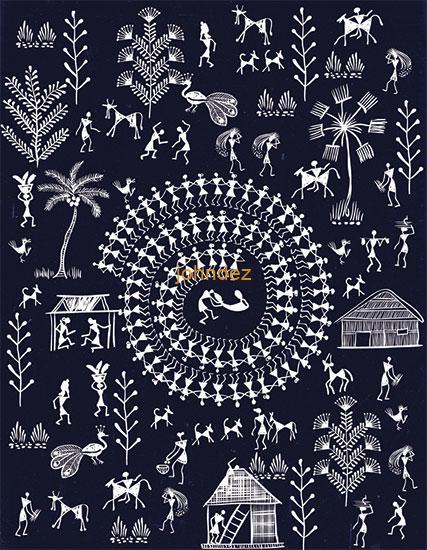
Agriculture is a significant part of the Warli way of life, and farmers make up a large proportion of the tribe. They respect wildlife and nature, as it provides them with food and is vital to their way of life.
Warli artists use their clay huts as a backdrop for their paintings, as seen with cave paintings. They use simple geometric shapes, such as a circle, triangle, and square, to represent different aspects of nature. The circle represents the sun and moon, while the triangle comes from mountains and pointed trees. Two intersecting triangles represent the human body, with the top triangle representing the torso and the bottom one the pelvis, symbolizing the balance of the universe. Triangles are usually larger at the top if they represent a man and wider towards the bottom if they represent a woman.
Whimsical Chronicles of Gin & Brain…
What do you tell the purists Gin?
Nothing Brain! Just Pump up the jam the cunk way!
And let us do our bit every start leads to something new.
